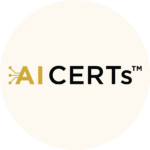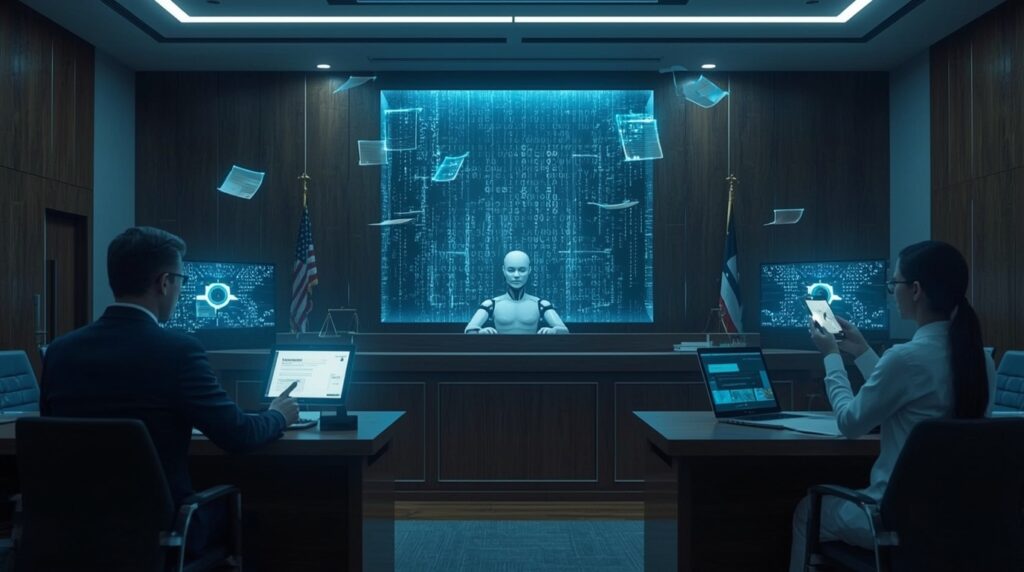
AI CERTS
5 months ago
AI Ethics 2025: Navigating Legal Risks in AI-Generated Content
But with these advances come pressing legal and ethical challenges. Questions about copyright ownership, deepfake prevention, and international AI regulations are no longer theoretical—they’re urgent. In the latest AI news, governments, corporations, and research bodies are racing to create safeguards that protect innovation while minimizing harm. For AI professionals, students, and decision-makers, understanding these risks is critical to navigating the opportunities of the future.

The Growing Need for Clear AI Regulations
The explosion of AI-generated text, images, audio, and video has outpaced the ability of existing laws to keep up. In 2025, policymakers around the world are developing new frameworks to close this gap and protect both creators and consumers.
Key areas under debate include:
- Intellectual property rights for AI-generated works.
- Data privacy rules for AI training datasets.
- Transparency requirements for AI systems in public and commercial use.
Organizations like the OECD AI Policy Observatory emphasize the need for uniform global regulations to prevent disputes across borders. Without international alignment, companies face a patchwork of compliance rules that slow innovation.
Example: The EU’s AI Act, set for full implementation in 2025, categorizes AI systems by risk level and imposes strict documentation and transparency requirements for high-risk systems.
Copyright Challenges in the Age of AI
With AI tools creating paintings, music compositions, and even entire novels, copyright laws face unprecedented stress tests. The central question—who owns an AI-generated work—remains unresolved in many jurisdictions.
Under current laws in most countries, only human creators can hold copyrights. This gap leads to:
- Legal disputes over AI-created intellectual property.
- Unclear licensing models for AI-generated content.
- Market uncertainty for businesses selling AI-generated products.
For companies in creative industries—such as game development, music production, or marketing—this uncertainty can delay projects or cause costly reworks.
Tip: Establish internal content ownership policies now. Whether you credit the user, developer, or organization, clarity prevents future litigation.
Deepfake Prevention and Public Trust
Deepfakes—hyper-realistic yet fake AI-generated videos—have moved from novelty to a global threat. They can be weaponized to damage reputations, influence elections, or commit fraud.
To address this, AI ethics experts are focusing on:
- Watermarking all AI-generated media for traceability.
- Verification systems that authenticate source footage.
- On-device AI detection tools to flag manipulated content in real time.
The latest AI Copilot PCs could soon ship with integrated deepfake detection, allowing users to instantly verify media authenticity without cloud processing—boosting both speed and privacy.
Example: Microsoft’s Content Credentials initiative uses embedded metadata to show when and how an image or video was generated.
Balancing Innovation with Responsibility
AI is a powerful enabler—speeding workflows, automating repetitive tasks, and delivering hyper-personalized experiences. However, without ethical guardrails, it risks eroding trust.
Responsible AI development means:
- Transparency – Clear disclosure when AI is involved in content creation.
- User control – Allowing people to customize AI behavior and data use.
- Bias prevention – Actively testing and refining models to avoid discrimination.
- Ethics oversight – Consulting multidisciplinary ethics boards before launch.
By following these principles, businesses can continue innovating while protecting users from unintended harm.
Preparing for AI Ethics 2025 as a Professional
For those working with AI—whether in engineering, content creation, or policy—the next year will bring new compliance expectations and career opportunities.
Steps to stay ahead:
- Stay informed – Follow global policy updates in the latest AI news.
- Upskill – Pursue certifications in AI ethics, governance, and security.
- Audit your AI tools – Regularly check models for bias, accuracy, and compliance.
- Engage in public dialogue – Participate in industry events and policy discussions to shape ethical standards.
Conclusion: The Road Ahead for AI Ethics 2025
AI Ethics 2025 is more than a trend—it’s the foundation for a trustworthy Artificial Intelligence ecosystem. Clear legal frameworks, deepfake prevention measures, and responsible innovation will define how AI trends evolve in the next decade.
For professionals, the message is clear: embrace the transformative power of AI, but be proactive in understanding and managing its risks. As AI Copilot PCs, on-device AI, and advanced generative tools continue to integrate into our daily lives, the ethical groundwork we lay today will shape how AI serves society tomorrow.
If you enjoyed this article, you’ll love our previous deep dive: Generative AI in 2025: How It’s Transforming Content, Code, and Creativity— it’s full of practical steps to build ethical AI systems today.
Want to lead ethical AI initiatives at your org?
Earn the AI Ethics™ Certification from AI CERTs and gain the frameworks and tools to govern AI responsibly.



